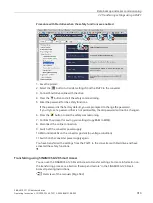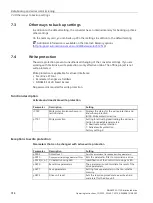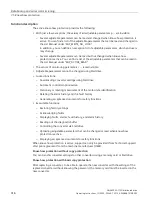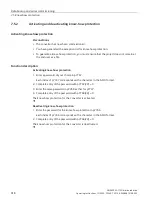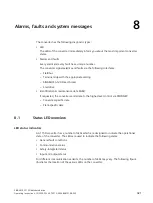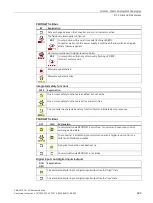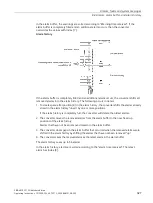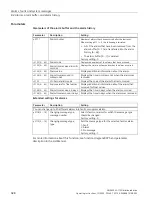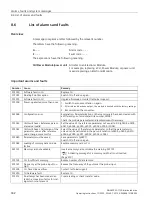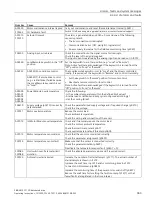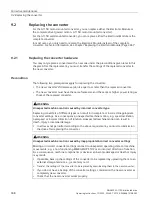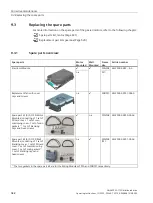
Alarms, faults and system messages
8.4 Alarms, alarm buffer, and alarm history
SINAMICS G115D distributed drive
Operating Instructions, 12/2020, FW V4.7 SP13, A5E48681219B-002
327
In the alarm buffer, the warnings are sorted according to "Warning time received". If the
alarm buffer is completely filled and an additional alarm occurs, then the converter
overwrites the values with Index [7].
Alarm history
If the alarm buffer is completely filled and an additional alarm occurs, the converter shifts all
removed alarms into the alarm history. The following occurs in detail:
1.
To create space after position [8] in the alarm history, the converter shifts the alarms already
stored in the alarm history "down" by one or more positions.
If the alarm history is completely full, the converter will delete the oldest alarms.
2.
The converter moves the removed alarms from the alarm buffer to the now freed up
positions of the alarm history.
Alarms that have not been removed remain in the alarm buffer.
3.
The converter closes gaps in the alarm buffer that occurred when the removed alarms were
shifted in the alarm history by shifting the alarms that have not been removed "up".
4.
The converter saves the received alarm as the latest alarm in the alarm buffer.
The alarm history saves up to 56 alarms.
In the alarm history, alarms are sorted according to the "alarm time received". The latest
alarm has Index [8].

